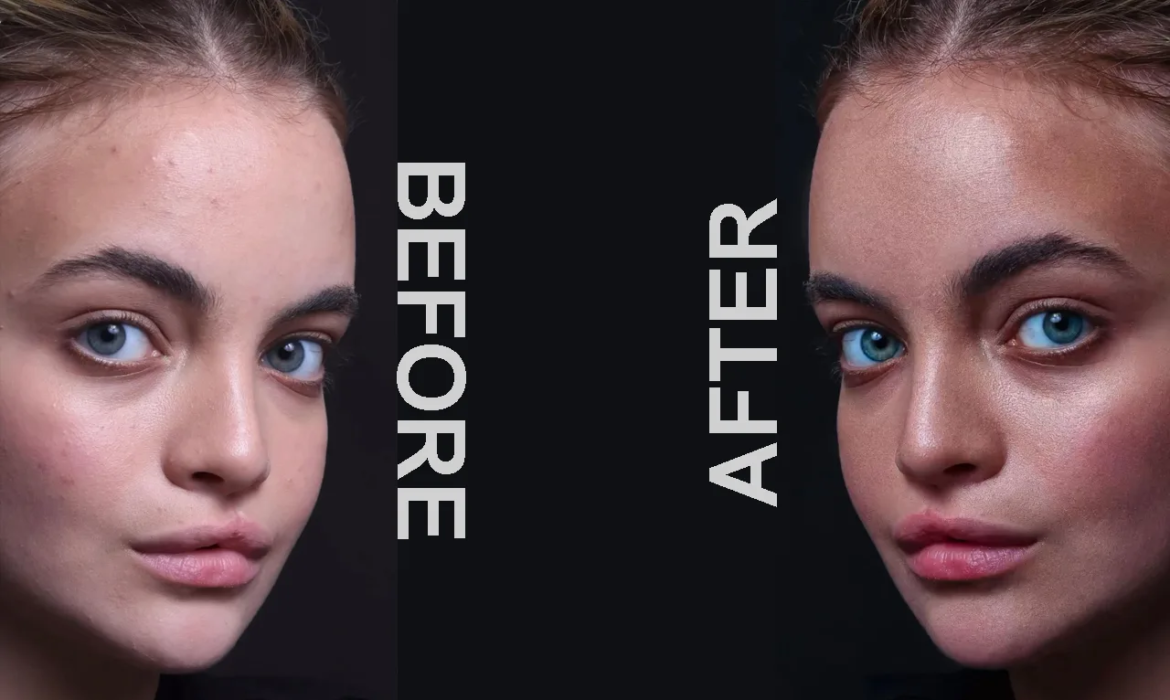Top 10 Shadow Creation Service Providers in 2025: A Comprehensive Comparison
If you’ve ever looked at a product photo and thought, “Something’s off, but I can’t tell what,” chances are it was missing a shadow. A subtle, natural shadow makes an image feel grounded and real – like it belongs in the world instead of floating in space.
That’s where a shadow creation service comes in. And trust me, not all services are created equal. Whether you’re an e-commerce business owner, a product photographer, or someone running an online shop, finding the Best Shadow Creation Service Provider can make your images look 10× more professional – and your customers will notice.
So, let’s talk about the Top 10 Shadow Creation Service Providers in 2025. I’ve taken a good look at their work, what they offer, and what makes each one shine. Grab a coffee and let’s go through them together – nice and easy.
Why Shadow Creation Matters in Professional Image Editing
Shadows are more than just a subtle addition to an image-they are crucial in enhancing realism and depth. A product image without proper shadows may appear flat, unnatural, or disconnected from its background. For photographers and e-commerce businesses, poorly executed shadows can directly impact sales, as high-quality images are key to attracting customers.
Choosing the Best Shadow Creation Service Provider ensures that shadows are not only realistic but also tailored to the specific style and context of your images. Some services specialize in natural drop shadows that simulate real-world lighting, while others offer creative or stylized shadows that enhance artistic projects. The quality of shadow creation can significantly affect your brand’s visual identity, making it essential to invest in a trusted provider who understands lighting, perspective, and subtle nuances.

Criteria for Selecting the Best Shadow Creation Service Provider
When searching for the Best Shadow Creation Service Provider, several factors should be considered. Accuracy and realism are critical, as shadows need to align with the light source and object dimensions. Speed and efficiency matter too, especially for businesses handling large volumes of images. A reliable service should also offer customization options, allowing adjustments to shadow opacity, angle, softness, and color to suit different products or artistic visions.
Customer support and communication are equally important. Working with a provider who can understand your requirements, offer revisions, and deliver consistent quality ensures a smooth workflow. Pricing is another factor, but it shouldn’t compromise quality. The most successful providers strike a balance between affordability and professional-grade results. In the following sections, we’ll explore the top 10 providers in detail, highlighting what makes them the Best Shadow Creation Service Provider in 2025.

1. Cloud Retouch – The All-Rounder That Gets It Right Every Time
If you’ve been searching for a team that delivers consistency, care, and class in every edited image, Cloud Retouch should be at the top of your list.
They’re one of the few companies that balance affordability with premium quality – which is exactly what you want from the Best Shadow Creation Service Provider. Whether it’s a simple drop shadow for an e-commerce product or a more detailed reflection shadow for jewelry or tech items, they handle it all manually with trained designers, not just quick software tools.
What makes them special is the attention to detail. They study how light naturally falls in the photo, match the direction, and add depth without overdoing it. The result? Realistic, beautiful images that look natural and professional.
They also offer:
- Fast turnaround (especially handy for bulk orders)
- 24/7 support
- Affordable rates
- Free trials (so you can test before committing)
If you want a friendly, reliable, and long-term partner to handle your photos, check them out here 👉 Cloud Retouch.
It’s no surprise they’re leading the list as the Best Shadow Creation Service Provider in 2025.

2. Image Work India – Affordable & Reliable for Big Projects
Next up is Image Work India, another strong contender and one of the most recognized names in professional photo editing. They’ve been around for years, serving global clients with a wide range of image editing services.
When it comes to shadow creation, Image Work India knows how to bring life to flat product photos. They offer different styles – drop, natural, reflection, and cast shadows – so you can choose what fits your brand.
If you handle a large number of photos every week (say, for an online store or catalog), these folks are built for bulk. Their team is large, fast, and very used to handling thousands of images without breaking a sweat.
Why many people consider them a Best Shadow Creation Service Provider:
- Great pricing for bulk projects
- Quality remains consistent even at high volume
- Offers free trial edits to check their quality
If cost-efficiency is your priority but you still want dependable quality, Image Work India could easily be your go-to option.

3. FixThePhoto – Polished Edits for Creative Professionals
FixThePhoto is known worldwide for its high-end editing work, especially for photographers. They also provide strong shadow creation services that feel more “artistic” than mass-produced.
Their team focuses on maintaining natural light balance, realistic softness, and seamless blending. If you’re working with portraits, fashion shots, or luxury product images, their style fits beautifully.
It’s not the cheapest service out there, but you’re paying for that handcrafted, studio-ready finish. If you want to elevate your brand visuals, FixThePhoto is worth a look when you’re comparing who’s the Best Shadow Creation Service Provider for premium editing.
4. Clipping Path India – The One-Stop Editing Hub
When you need more than just shadow creation – like background removal, color correction, or ghost mannequin – Clipping Path India is a reliable name.
They’ve been in the business for over a decade and have developed a streamlined workflow that ensures quality across all their services. Their shadow creation team works closely with clipping path experts to make sure shadows align perfectly with the isolated subject.
This company is great for agencies or online sellers who want everything handled by one vendor instead of juggling multiple services. That’s why they often make the shortlist for anyone searching for the Best Shadow Creation Service Provider with full-service editing capabilities.

5. RetouchUp – Fast, Friendly, and Focused on Photographers
RetouchUp is based in the U.S. and caters primarily to professional photographers and smaller businesses. Their shadow creation services are clean, precise, and perfectly suited for product shots or model images.
What people really love about RetouchUp is their personal touch. You can communicate directly with their support team, get updates, and request small revisions without any fuss.
Their pricing isn’t the cheapest globally, but the quality is dependable. So, if you’re running a boutique photography studio or a niche e-commerce brand, RetouchUp might be your Best Shadow Creation Service Provider for 2025.

6. Path Edits – Budget-Friendly with Impressive Results
Now, let’s talk about Path Edits. They might not be as big as some others on the list, but their work speaks for itself. They specialize in path and shadow editing – meaning they’ve really mastered the craft of making images look naturally grounded.
Their pricing is very competitive (starting around $0.25 per image for simple shadows). If you’re a startup or small online store and want to get good-looking images without spending a fortune, Path Edits can deliver excellent value.
This makes them a smart pick if your goal is finding the Best Shadow Creation Service Provider that’s both affordable and high-quality.

7. Clipping Path Solve – Great for Consistency & Volume
If your business deals with a massive image load every month – think fashion stores, furniture retailers, or marketplaces – Clipping Path Solve could be the answer.
Their shadow creation process focuses on light consistency. Every product looks like it’s been photographed under the same lighting conditions, which is great for maintaining brand consistency.
They’re fast, dependable, and very cost-effective. If volume and turnaround time are your biggest needs, Clipping Path Solve might easily earn a spot on your list of the Best Shadow Creation Service Providers.
8. Edit The Picture – Great for Modern E-commerce Brands
Edit The Picture does a fantastic job combining creativity with technical skill. Their team pays close attention to how shadows interact with product textures, which helps make photos feel more lifelike.
If you’re running an online shop and want your products to pop against a clean white background, their natural and drop shadow services are spot-on. They’re also very open to feedback and revisions, so you can fine-tune the look until it matches your brand vibe.
They’re not the biggest studio, but they’re super responsive – one of those under-the-radar gems you’ll be happy you found while searching for the Best Shadow Creation Service Provider.
9. Clipping Path Dhaka – Fast, Simple, and Scalable
Clipping Path Dhaka has been quietly growing in popularity. They offer all the standard types of shadow creation – drop, natural, reflection – at prices that make them ideal for bulk image work.
They might not be the flashiest provider, but they deliver clean, consistent work quickly. That’s something many online sellers value more than anything else.
If you’re after reliability, not glamour, Clipping Path Dhaka is one to keep on your shortlist of Best Shadow Creation Service Providers.

10. Clipping Aid – Creative Shadows That Add Style
Last but not least, Clipping Aid. These folks go beyond simple shadows – they create reflection and floating shadow effects that can make your images feel premium.
They’ve got a good reputation for accuracy and a knack for maintaining realism even when working with complex products like jewelry or glass. Their prices are fair, and their turnaround is solid.
For creative brands looking for a little more style in their imagery, Clipping Aid could be your Best Shadow Creation Service Provider of 2025.
How to Pick the Best Shadow Creation Service Provider for You
Alright, now that we’ve gone through the top 10 companies, you might be thinking – “Cool, but how do I actually choose one?”
A totally fair question. There’s no one-size-fits-all answer because the Best Shadow Creation Service Provider for a small Etsy shop might not be the same for a big e-commerce brand pushing thousands of SKUs.
So, let’s break it down like we’re having a coffee chat – simple, real, and honest.
Know Your Goals First
Before you even start comparing websites and prices, pause for a second and think:
- What kind of photos do you need shadows for?
- How many images are we talking – dozens, hundreds, or thousands?
- Do you need them fast, or can you wait a few days for better detail work?
If you’re doing lifestyle or product shots and want a natural, “real-world” feel, you’ll need a service that can handle natural or reflection shadows. If you’re editing pack-shots for Amazon or Shopify listings, drop shadows might do the trick.
The Best Shadow Creation Service Provider will listen to your needs instead of pushing a one-style-fits-all approach.
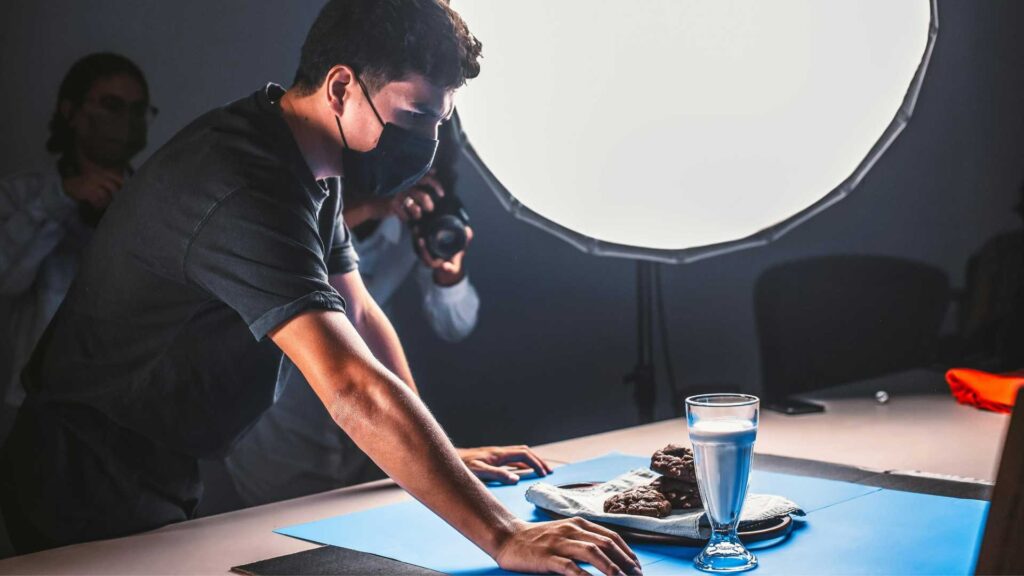
Look at Real Before-and-After Samples
Every provider can say they’re the best – but their work will tell you the truth. Ask to see before-and-after examples. Look closely at the shadows:
- Do they match the direction of the light?
- Is the softness realistic, or does it look like a sticker?
- Does the product feel grounded, not floating?
A good shadow makes you forget it was edited at all. That’s the level the Best Shadow Creation Service Provider should deliver.
Don’t Just Compare Price – Compare Value
It’s tempting to pick whoever charges the least per image. But cheap doesn’t always mean cost-effective.
Let’s say you hire a super-cheap service, and 30 % of your images need fixing. That eats up time, energy, and sometimes extra cost. On the other hand, if you pick a slightly pricier but higher-quality provider (like Cloud Retouch or Image Work India), you might pay a few cents more per image but save hours of back-and-forth later.
When comparing, always ask:
- What’s the turnaround time?
- Are revisions included?
- How do they handle complex items like transparent or reflective surfaces?
The Best Shadow Creation Service Provider will be transparent about all this up front.

Communication Is Everything
You’d be surprised how often this makes or breaks a partnership. You want a provider who responds fast, answers your questions clearly, and doesn’t disappear halfway through a project.
The top companies – like Cloud Retouch – have dedicated support teams that stay in touch with you through every stage of your order. You can give feedback, request tweaks, and get updates anytime.
That sense of reliability makes a huge difference, especially if you’re sending hundreds or thousands of images at a time.
Try Before You Buy
Here’s one of my favorite tips: ask for a free trial.
Almost every major provider (including Cloud Retouch, Image Work India, and Edit The Picture) offers a few free sample edits. Take advantage of that!
Send the same photo to two or three different providers and compare their results side-by-side.
You’ll immediately see:
- Which shadow looks most realistic
- Who followed your instructions best
- Who communicated clearly
This small test will show you who really deserves to be called the Best Shadow Creation Service Provider for you.
Why Shadows Are So Much More Than a “Visual Touch”
Let’s step back for a moment. Why do shadows matter so much, anyway?
Because in e-commerce and digital marketing, your images are your sales team. They’re the first impression your customers get. A product without shadows looks flat, almost like a copy-paste cut-out. Add realistic shadows, and suddenly – it feels tangible, trustworthy, and worth buying.
Here’s the science behind it: human eyes naturally expect to see depth. Shadows help our brain understand space and shape. When something lacks that, it feels unnatural – and your audience might scroll past it without even realizing why.
So when you invest in the Best Shadow Creation Service Provider, you’re not just paying for an image edit – you’re investing in your brand’s credibility.

Common Types of Shadows (and When to Use Them)
Let’s make it practical for a moment. Not all shadows are the same. Depending on your product and style, you’ll want different types.
Drop Shadows
These are the most common – they make your object look like it’s sitting just above the surface. Perfect for e-commerce stores like Amazon or eBay listings.
Natural Shadows
These mimic real-world light, like what you’d see in a lifestyle photo. Great for fashion, shoes, or furniture photography.
Reflection Shadows
Used mainly for glossy or reflective products – think sunglasses, bottles, electronics, or jewelry. They create a classy mirror-like base.
Floating Shadows
These make objects look slightly elevated, giving a soft, modern feel that’s popular in tech or packaging shots.
The Best Shadow Creation Service Provider will know which style suits your image and apply it perfectly without overdoing it.
Turnaround Time and Scalability
If you’re handling hundreds or thousands of images, you need a team that can scale up without sacrificing quality. Some companies deliver 50 images in a day – others can process 1,000 +.
Ask potential providers:
- What’s their average turnaround for 100 images?
- Can they maintain quality on large orders?
- How do they ensure consistency across the batch?
Providers like Cloud Retouch have dedicated production workflows built just for this – meaning you get consistent results whether you send 20 photos or 2,000.
That kind of scalability is what separates an average company from the Best Shadow Creation Service Provider.
Quality Control – The Secret Ingredient
Even if a company promises fast delivery, what matters most is how they check their own work.
Good providers have multi-layer quality checks. Usually, one designer does the editing, another reviews the light direction and shadow accuracy, and a supervisor gives the final approval.
This might sound small, but it’s what keeps you from receiving random inconsistencies that make your catalog look unprofessional.
So, when you’re choosing your provider, ask them: “What’s your quality control process?”
The Best Shadow Creation Service Provider will be happy to explain it.

Why Cloud Retouch Stands Out
Now that we’ve looked at the big picture, let’s talk honestly about why Cloud Retouch (yep, that’s us 😄) deserves to be near the top of your list.
We’ve spent years refining our process to make sure our clients get professional-grade results every single time. Our goal isn’t just to edit photos – it’s to make your images sell.
Here’s what we bring to the table:
- Expert designers, not just automated tools
- Realistic shadow creation using natural light logic
- Fast delivery for both small and bulk orders
- 24/7 customer support with real humans (not bots)
- Free trials, so you can test our quality risk-free
We don’t believe in “one style fits all.” We’ll look at your image type, your target market, and your brand tone to decide whether you need drop, reflection, or natural shadows. Every detail matters.
If you want to see what that looks like, check out Cloud Retouch’s Shadow Creation Services.
We’re confident you’ll see why so many businesses call us the Best Shadow Creation Service Provider in 2025.
Quick Checklist Before You Decide
Here’s a simple checklist to keep handy before picking your service provider:
✅ Ask for sample work or a free trial.
✅ Compare shadow realism (softness, direction, natural feel).
✅ Check revision policy – good providers won’t charge for minor tweaks.
✅ Make sure they handle your image volume comfortably.
✅ Look for 24/7 support or at least responsive communication.
If a company ticks all those boxes, there’s a high chance you’ve found your Best Shadow Creation Service Provider.
Final Thoughts – Make Your Images Work for You
At the end of the day, choosing the right shadow creation partner isn’t just about editing – it’s about creating visuals that sell.
Your product photos tell your brand story before anyone reads a single word. And when those images look real, consistent, and visually appealing, customers naturally trust your brand more.
Whether you’re a big e-commerce business, a boutique studio, or a solo seller starting out – investing in a professional shadow creation service is one of the smartest moves you can make this year.
And if you’re still unsure where to begin, take advantage of the free trial from Cloud Retouch. Test our work. Compare it with others. Then decide for yourself who the Best Shadow Creation Service Provider really is.
Get the Best Reflection Shadow Creation Service at Cloud Retouch
When it comes to presenting your products online, every pixel counts. The right image can make a viewer stop scrolling, look closer, and eventually make a purchase. But sometimes, even high-quality product photos can look flat or lifeless. That’s where professional reflection shadow work comes in. It adds depth, realism, and polish to your visuals-making your products appear tangible and premium.
If you’re comparing providers and looking for the best reflection shadow creation service, this guide is here to help. We’ll dive into what makes a reflection shadow so powerful, why it matters for your business, and how Cloud Retouch can deliver the kind of image editing that turns plain photos into professional masterpieces. Whether you’re an eCommerce store owner, photographer, or digital marketer, choosing the best reflection shadow creation service can be the difference between an average image and one that sells.
At Cloud Retouch, we take image enhancement seriously. Our team combines creativity with technical precision to produce natural, realistic shadows that enhance-not distract from-your product. In the following sections, we’ll go in depth into how reflection shadows work, how they can benefit your brand, and why Cloud Retouch stands out as the leading name for the best reflection shadow creation service available today.

Why Reflection Shadows Matter for Product Images
In today’s competitive online marketplace, images are your most persuasive selling tool. When a customer can’t touch or feel your product, visuals become the deciding factor. A reflection shadow is a subtle but powerful way to add realism and dimension to your images. By grounding your product visually, a reflection makes it look like it’s sitting on a surface rather than floating in space. That realistic effect immediately elevates your brand’s image quality.
The best reflection shadow creation service doesn’t just make your image “look good.” It makes it feel real. The human eye naturally expects objects to interact with light and surfaces. Without a reflection or shadow, a product looks unnatural. But add a soft mirror reflection or a gentle drop shadow, and suddenly it feels tangible.
This matters because consumers subconsciously associate realism with trust. When your images look believable, your brand appears more reliable. The result? Higher engagement, more conversions, and stronger brand perception. At Cloud Retouch, our skilled editors use advanced Photoshop techniques to craft natural-looking reflections that mimic real-world lighting conditions-ensuring your images look authentic every time.

The Secret Behind the Best Reflection Shadow Creation Service
Reflection shadow creation is more than just duplicating an image and lowering opacity-it’s an art. To deliver the best reflection shadow creation service, you need to understand the principles of light, surface, and material. Different textures reflect light in unique ways, and getting that right is key to realism.
At Cloud Retouch, our editors analyze every detail of your image before applying the effect. We study the lighting angle, surface type, and product material to craft a reflection that feels natural. For glass, jewelry, electronics, or luxury items, we often use glossy mirror reflections that highlight precision and cleanliness. For clothing or soft materials, we use a subtler approach that enhances dimension without over-polishing.
This careful, hands-on process is why clients return to Cloud Retouch time and again. We don’t rely solely on software automation-our work is human-driven. Every reflection or shadow we create goes through a review process to ensure perfection. That’s what separates us from other editing services and makes us the best reflection shadow creation service for eCommerce brands, photographers, and agencies worldwide.
How the Cloud Retouch Process Works
Our workflow is designed to make things simple, smooth, and reliable for every client. When you choose Cloud Retouch for your best reflection shadow creation service, here’s how the process unfolds:
You start by uploading your product images directly to our secure portal at CloudRetouch.com. Once uploaded, our team reviews your photos and takes note of your preferred style-be it natural mirror reflection, soft shadow, or a full composite reflection.
Next, our expert editors work manually to recreate a realistic environment around your product. We carefully mirror the product at the correct angle, apply the right blur and opacity, and ensure the reflection blends seamlessly into the surface. This process can vary depending on whether the product sits on a glossy, matte, or transparent surface.
Finally, our quality assurance team checks every detail to ensure it meets the highest professional standards. You’ll receive your edited images promptly and can request adjustments if needed. Our customer-friendly revision policy guarantees you get exactly what you want. That’s the best reflection shadow creation service in action-meticulous, collaborative, and results-driven.

Why Cloud Retouch Stands Out
It’s easy to find generic image editing companies offering shadow or reflection work. But Cloud Retouch is not just another editing provider-we specialize in making reflections believable. That’s why clients across the world trust us as their go-to choice for the best reflection shadow creation service.
What makes us different? For one, our editors have years of experience in product retouching, compositing, and lighting design. We don’t use filters or pre-made effects. Every project is built from scratch based on your product’s lighting and composition.
Second, we offer unmatched consistency. If you’re editing hundreds of product photos for an eCommerce site, maintaining a uniform look is critical. Our editors ensure each image aligns perfectly in tone, lighting, and perspective. That level of consistency builds trust and elevates your brand identity.
Lastly, we combine quality with affordability. We understand that small and medium businesses need world-class editing without breaking their budget. That’s why our best reflection shadow creation service is priced competitively while maintaining top-tier quality.

Benefits of Professional Reflection Shadow Creation
When you invest in professional reflection shadow work, you’re not just paying for image manipulation-you’re investing in brand impact. The best reflection shadow creation service enhances your visuals in several key ways:
It increases visual appeal by giving your images a clean, polished look that catches attention immediately. Reflections add luxury, while shadows create realism. Together, they help your brand stand out from competitors.
It improves product perception. Customers often equate well-edited photos with product quality. When your visuals look refined and professional, it signals reliability. This psychological impact can directly boost sales and customer confidence.
It boosts marketing performance. Whether on your website, social media, or ads, images with professional shadows perform better. They retain viewer attention longer and encourage more clicks, conversions, and engagement.
And finally, it saves time and effort. Instead of manually editing hundreds of photos, you can outsource to Cloud Retouch and let experts handle it efficiently. You focus on your business-we handle the visuals. That’s what makes us the best reflection shadow creation service you can depend on.
How Reflection Shadows Influence Brand Trust
When a customer lands on your website or social media page, they start judging your brand within seconds. Before they even read your product descriptions, their brain processes the visuals. This is where a high-quality reflection shadow can make a huge difference. A realistic shadow instantly makes your product look grounded, tangible, and trustworthy. It gives the subconscious impression that your brand pays attention to detail-which builds credibility.
The best reflection shadow creation service does more than just enhance an image; it enhances the trustworthiness of your business. A photo with poor or unnatural lighting can make even a high-end product appear cheap. On the other hand, a photo that’s been carefully refined with natural shadows and reflections communicates professionalism. That’s why big brands never skip professional image editing-they know visuals are powerful sales tools.
At Cloud Retouch, we take brand perception seriously. Our reflection shadow techniques are designed not just for visual beauty, but for psychological impact. We make sure every reflection is smooth, balanced, and believable so your product looks premium. With this approach, our clients consistently report improved engagement and stronger brand credibility online. When you’re aiming to grow your eCommerce presence, trusting the best reflection shadow creation service means trusting a better first impression.
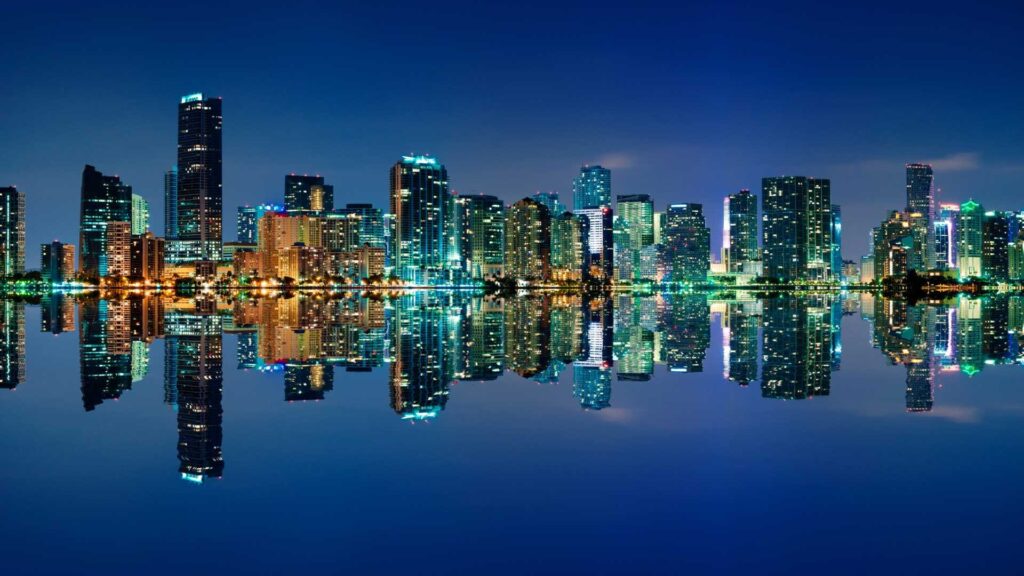
Choosing the Right Editing Partner for Your Business
If you’ve ever worked with multiple image editing services, you know they’re not all equal. Some deliver rushed work, while others over-edit to the point of losing realism. Finding the best reflection shadow creation service requires knowing what to look for.
First, always check their portfolio. Are the reflections subtle and realistic? Or do they look artificial and heavy? At Cloud Retouch, we believe the art of reflection lies in balance-neither too strong nor too faded.
Second, communication matters. The best reflection shadow creation service will always listen to your vision. We encourage our clients to describe their preferred style-whether it’s glossy mirror reflections for luxury products or soft natural shadows for lifestyle items. Every image has its own personality, and we make sure to respect that individuality.
Third, consistency is crucial. If you’re editing a catalog of hundreds of images, you need every photo to look cohesive. A single mismatch in lighting or reflection can break the flow. That’s why our editing process is standardized but flexible, ensuring every product fits perfectly within your brand’s aesthetic.
Finally, consider turnaround time and pricing transparency. Many services promise fast results but cut corners on quality. At Cloud Retouch, we maintain speed without compromise. Our pricing is upfront-no hidden costs, no confusing packages. You know exactly what you’re paying for, and you get exactly what’s promised: the best reflection shadow creation service for your brand.

The Cloud Retouch Quality Promise
When you trust your visuals to us, you’re not just outsourcing a task-you’re partnering with professionals who genuinely care about your brand image. We take pride in offering the best reflection shadow creation service that blends artistry with reliability.
Every image that passes through our studio is handled with meticulous care. Our editors use advanced Photoshop techniques to ensure light consistency, color balance, and natural realism. We don’t apply generic filters or shortcuts. Instead, we custom-build each reflection based on your image’s angle and lighting environment.
But what really sets Cloud Retouch apart is our commitment to quality assurance. Every project goes through a detailed review before delivery. If we find even the slightest inconsistency, we rework it-no questions asked. That’s part of our promise to deliver the best reflection shadow creation service experience every single time.
In addition, we provide responsive customer support so you never feel left out of the process. Whether you need edits, revisions, or new project estimates, our support team is always available. This dedication to client satisfaction is why Cloud Retouch has become a trusted name in the image editing industry.

Real-Life Use Cases of Reflection Shadow Editing
To understand the true power of the best reflection shadow creation service, let’s explore some common scenarios where reflection editing transforms images from ordinary to exceptional.
E-commerce Product Photography:
For online stores, reflections add depth to products like watches, shoes, sunglasses, or electronics. These subtle shadows mimic studio lighting and make your items look like they’re sitting naturally on a glossy surface-just like high-end brands do.
Jewelry and Luxury Items:
Luxury brands rely on perfect reflections to showcase brilliance and craftsmanship. A soft mirrored reflection under a diamond ring, for example, enhances sparkle and adds prestige. At Cloud Retouch, our editors understand how to achieve that perfect balance between reflection strength and product shine.
Cosmetic and Skincare Products:
Reflections in cosmetics are about clarity and cleanliness. The best reflection shadow creation service can highlight smooth packaging and sleek design, helping products appear more appealing and premium.
Advertising and Print Media:
Reflection shadows are essential in print catalogs, posters, and banners. They give the visual hierarchy and make products stand out even on flat mediums. This professional finish helps ads attract more attention, whether online or offline.
In all these cases, the role of reflection shadow creation is to help your audience focus on what matters-the product itself. And at Cloud Retouch, we ensure every reflection complements the subject instead of overpowering it.

Why the Reflection Shadow Creation Service Matters
If you’ve been searching for the best reflection shadow creation service, chances are you’re comparing providers to find real value for your money. This keyword is important because it reflects the mindset of smart buyers like you-people who care about both quality and affordability.
When you choose Cloud Retouch, you’re not just choosing a name that ranks well in search results-you’re choosing proven expertise. Our dedication to being the best reflection shadow creation service isn’t just a claim; it’s a commitment we fulfill through every project we deliver.
We continuously refine our techniques, train our team, and upgrade our tools to stay ahead in the industry. Our goal is to make world-class image editing accessible to everyone-from individual photographers to large-scale retailers. When you search for the best reflection shadow creation service, we want Cloud Retouch to be your first and only choice.
How Reflection Shadows Boost Sales and Engagement
Visuals are your digital storefront. In fact, studies show that over 70% of online buyers decide whether to trust a product based on its image quality. That means poor-quality visuals could cost you sales-while professional images can increase conversions dramatically.
The best reflection shadow creation service plays a major role in boosting engagement. When your products appear realistic, customers can imagine them in their hands or homes. This emotional connection is powerful-it drives purchase decisions.
A great example is online fashion or footwear stores. Products with soft reflections underneath appear polished and high-end. Customers subconsciously associate that quality with the product itself, which increases purchase confidence. That’s why investing in the best reflection shadow creation service pays off-not just aesthetically, but financially.
With Cloud Retouch, our clients often notice immediate improvements in their click-through and conversion rates. Because when your images look professional, customers feel reassured that your brand is professional too.

Cloud Retouch: Your Partner in Professional Image Editing
At the end of the day, visuals define your online success. Whether you’re selling through Amazon, Shopify, or your own eCommerce site, every image represents your brand. That’s why Cloud Retouch is more than an editing provider-we’re your creative partner for visual excellence.
Our best reflection shadow creation service is part of a complete suite of professional image editing solutions, including background removal, clipping paths, ghost mannequins, photo retouching, and color correction. No matter your niche-fashion, jewelry, furniture, electronics, or cosmetics-we have the expertise to make your images stand out.
We offer quick turnaround times, affordable pricing, and a 100% satisfaction guarantee. You’ll receive images that are ready for publication-clean, polished, and perfectly aligned with your brand identity.
Ready to experience the best reflection shadow creation service? Visit Cloud Retouch today and request a free trial. See firsthand how our editing can transform your visuals into powerful marketing assets.
Final Thoughts
In today’s fast-paced visual market, your product images are more than just pictures-they’re your brand’s first impression. A professionally edited reflection shadow can mean the difference between being overlooked and being chosen. And when you choose Cloud Retouch, you’re not just choosing the best reflection shadow creation service; you’re choosing precision, trust, and visual excellence.
Let your products shine with realistic reflections and shadows that captivate customers and elevate your brand image. Visit cloudretouch to get started today. Experience the confidence that comes from knowing your visuals are handled by experts who truly care about quality.
Because when it comes to making your products look their absolute best, Cloud Retouch is the name you can trust-the real home of the best reflection shadow creation service online.
Get Expert Photo Shadow Creation Services with Cloud Retouch Today
In the world of professional photography and e-commerce, the smallest details can make the biggest difference. One element that can truly elevate your images is shadows. Shadows provide depth, realism, and a sense of authenticity to your visuals. But creating perfect shadows in photos isn’t always easy. Many photographers and online businesses struggle with uneven, unnatural, or distracting shadows that can ruin an otherwise perfect image. That’s where professional Photo Shadow Creation Services come into play. With Cloud Retouch, you can enhance your images effortlessly, ensuring that every photo stands out, looks professional, and captivates your audience.
Whether you’re selling products online, building a brand, or showcasing your photography portfolio, shadows play a crucial role in how your images are perceived. Poorly placed shadows can make a product appear flat, distort perspectives, and even reduce trust in your brand. Cloud Retouch specializes in offering expert Photo Shadow Creation Services that bring balance and harmony to your visuals. By carefully analyzing each photo and adding natural, realistic shadows, we ensure that your images look professional and ready to impress potential customers.
Why Shadows Matter in Photography
Shadows do more than just fill empty spaces-they create a sense of realism and dimension. Imagine looking at a product image with no shadows at all. It might appear floating, artificial, or poorly lit. Proper shadows ground objects in a scene, making them feel tangible and lifelike. Shadows also help highlight textures, contours, and shapes, drawing attention to the key aspects of your product or subject.
For e-commerce platforms, shadows are essential. Studies show that product images with realistic shadows convert better because they make the product more believable. Even in fashion, jewelry, and furniture photography, shadows can subtly guide the viewer’s eye, creating a sense of depth and quality that instantly enhances the visual appeal. With professional Photo Shadow Creation Services, you can achieve this level of quality without spending hours editing photos yourself. Cloud Retouch ensures each shadow is perfectly aligned, proportionate, and consistent with your lighting setup.

How Cloud Retouch Provides Expert Photo Shadow Creation Services
At Cloud Retouch, our team of skilled image editors understands the importance of precision in shadow creation. Our Photo Shadow Creation Services are tailored to suit your unique needs. Whether you want natural drop shadows for products, soft shadows for lifestyle images, or hard shadows for dramatic effects, we can create the perfect look.
We begin by analyzing your images and identifying areas where shadows are missing or inconsistent. Then, using advanced editing tools and techniques, we craft shadows that complement your lighting, perspective, and composition. This process ensures that your photos maintain a realistic and professional appearance, enhancing the overall visual experience for your audience. The goal of our Photo Shadow Creation Services is simple: to make your images look polished, professional, and ready for any platform, from online stores to social media campaigns.
Benefits of Professional Photo Shadow Creation Services
Investing in professional Photo Shadow Creation Services offers multiple advantages. Firstly, it saves you time. Instead of spending hours trying to manipulate shadows manually, you can rely on experts who can achieve high-quality results efficiently. Secondly, it improves consistency. For brands with multiple product images, maintaining uniform shadows across all visuals is essential for a cohesive look. Cloud Retouch ensures every image aligns with your brand’s visual standards.
Moreover, realistic shadows can significantly boost the perceived value of your products. When customers see images that look professional and visually appealing, they’re more likely to trust your brand and make a purchase. Even subtle improvements, like soft shadows or proper object grounding, can increase engagement and conversion rates. By using Cloud Retouch’s Photo Shadow Creation Services, you can transform your images from ordinary to extraordinary without the hassle of learning complex editing techniques yourself.

Types of Shadows We Can Create
Cloud Retouch offers a wide range of shadow creation options to cater to different photography styles. Drop shadows are ideal for product images, giving a sense of depth and placement on a surface. Reflection shadows create a mirrored effect, which is perfect for luxury products, cosmetics, or tech items. Cast shadows mimic natural light, helping lifestyle images and models look grounded in their environment. Each type of shadow is carefully crafted to ensure realism, balance, and consistency.
We also provide customizable options. If you have a specific shadow style in mind, we can replicate it across your images. Our team works closely with clients to ensure that every photo reflects the intended mood, lighting, and visual impact. No matter your industry, Cloud Retouch’s Photo Shadow Creation Services are designed to enhance the overall quality and appeal of your images.
Common Challenges in Shadow Creation and How We Solve Them
Creating shadows might seem simple, but many challenges can arise during the editing process. One common issue is mismatched lighting, where shadows appear unnatural or inconsistent with the existing light in the photo. Another challenge is dealing with complex objects or backgrounds that make shadow creation tricky.
Cloud Retouch tackles these challenges with precision and expertise. Our editors use advanced techniques to match shadows with the natural lighting of the scene, ensuring that each shadow appears seamless and realistic. We also handle intricate images with multiple objects, carefully crafting shadows for each element without compromising quality. By choosing our Photo Shadow Creation Services, you can avoid these pitfalls and enjoy flawless, professional images every time.

How Cloud Retouch Ensures High-Quality Results
When it comes to Photo Shadow Creation Services, quality is non-negotiable. At Cloud Retouch, we prioritize excellence in every image we handle. Our process begins with a detailed analysis of your photo to determine the optimal shadow type, angle, and intensity. We understand that each image is unique, and a one-size-fits-all approach doesn’t work in professional photography. Whether you are showcasing products, portraits, or lifestyle shots, we tailor our shadow creation techniques to enhance every visual element seamlessly.
Our team uses advanced editing software and industry-standard tools to achieve precision and realism. Every shadow is carefully crafted to reflect natural lighting, perspective, and object positioning. This attention to detail ensures that your images don’t just look good-they look authentic, polished, and ready for high-impact use on e-commerce platforms, social media, and marketing materials. With Cloud Retouch’s Photo Shadow Creation Services, your images gain depth, dimension, and a professional edge that sets your brand apart.
Why Businesses Choose Cloud Retouch
Many businesses struggle to create shadows that look realistic and consistent across multiple images. DIY editing can be time-consuming, frustrating, and often results in subpar outcomes. This is why more businesses are turning to Cloud Retouch for reliable Photo Shadow Creation Services. We provide not only technical expertise but also a streamlined workflow that saves you valuable time and effort.
Clients appreciate our commitment to consistency, speed, and quality. For online stores, having uniform shadows across all product photos enhances brand credibility and improves customer experience. Photographers benefit from our services by delivering polished images without spending hours in front of a computer. By choosing Cloud Retouch, you’re investing in professional-grade visuals that elevate your business image, increase engagement, and drive sales.
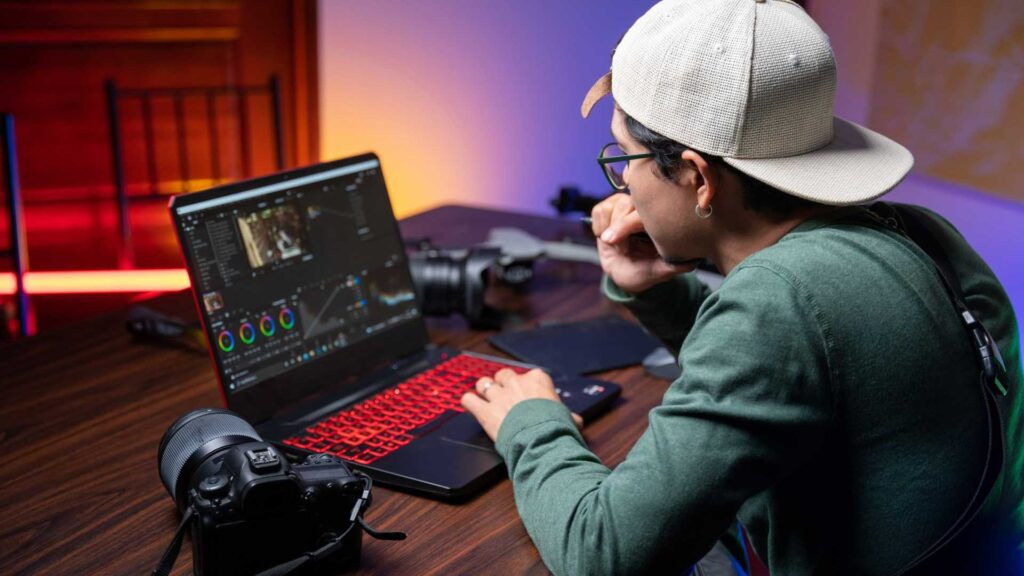
The Process of Photo Shadow Creation Services
Understanding our workflow helps you see why our Photo Shadow Creation Services are so effective. First, you submit your images through our secure platform. Our team evaluates the lighting, object placement, and scene composition to determine the best shadow approach. Next, we create custom shadows for each image, ensuring they match the natural light and perspective.
After editing, each image goes through a rigorous quality check. We verify that the shadows are realistic, consistent, and enhance the overall aesthetic. Finally, the images are delivered in your preferred format, ready for immediate use. Our process is designed to be seamless, fast, and tailored to meet your business needs, whether you have ten photos or thousands.
Common Uses for Photo Shadow Creation Services
The applications for professional Photo Shadow Creation Services are vast. E-commerce platforms benefit tremendously from realistic product shadows, which make products look tangible and appealing. Photographers can enhance portraits and lifestyle images, adding depth and dimension that draw viewers into the scene.
Marketing agencies also rely on professional shadow creation for advertisements, social media content, and promotional materials. Even catalog and brochure designers use shadows to create visual hierarchy and focus on key elements. No matter the industry, expertly crafted shadows improve visual storytelling, enhance professionalism, and boost audience engagement.
Affordable and Flexible Solutions
Cloud Retouch understands that every business has unique requirements and budgets. That’s why our Photo Shadow Creation Services are designed to be both affordable and flexible. We offer scalable solutions suitable for small businesses, large e-commerce stores, professional photographers, and agencies. You only pay for what you need, whether it’s a few images or a bulk project.
Our pricing reflects the quality and attention to detail you receive. By investing in professional shadow creation, you save time, reduce errors, and achieve superior results that free your team to focus on other important aspects of your business.
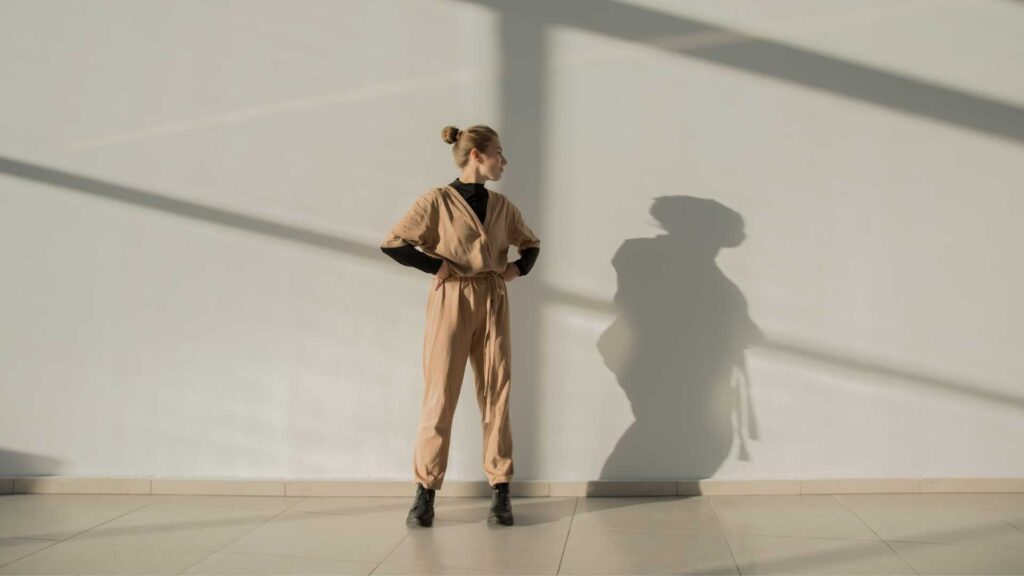
Real Client Success Stories
Many of our clients have transformed their visual content using our Photo Shadow Creation Services. For instance, an online fashion retailer saw a 25% increase in engagement after we added natural shadows to their product images. A professional photographer reported faster client approvals and more referrals thanks to the polished look we provided.
These success stories highlight the impact of professional shadow creation. Shadows aren’t just cosmetic-they directly influence perception, trust, and sales. Cloud Retouch has helped countless businesses elevate their images and stand out in competitive markets.
Elevate Your Images with Cloud Retouch
In today’s competitive visual landscape, every detail counts. Shadows are not just minor elements-they’re essential for creating images that captivate, engage, and convert. With Cloud Retouch’s expert Photo Shadow Creation Services, you gain access to professional editing, realistic shadows, and polished visuals that enhance your brand image.
Don’t let poorly executed shadows hold your visuals back. Let Cloud Retouch transform your photos with natural, high-quality shadows that make a real difference. Whether you’re selling products online, showcasing photography, or creating marketing content, our services ensure your images stand out. Visit Cloud Retouch today to get started and see how professional Photo Shadow Creation Services can elevate your visuals, save you time, and impress your audience.

FAQs About Photo Shadow Creation Services
What are Photo Shadow Creation Services?
Photo Shadow Creation Services involve professionally adding shadows to images to make them look realistic, grounded, and visually appealing. This helps enhance depth, dimension, and overall image quality.
Why are shadows important for product photos?
Shadows create a sense of realism and professionalism. They prevent objects from looking flat or floating, which increases trust and engagement for online customers.
Can Cloud Retouch create shadows for complex images?
Yes, we specialize in creating shadows for images with multiple objects, intricate details, or challenging backgrounds, ensuring consistency and realism.
How long does it take to receive edited images?
Turnaround times vary based on the project size, but Cloud Retouch offers fast and efficient delivery without compromising quality.
Are your services suitable for e-commerce platforms?
Absolutely. Our Photo Shadow Creation Services are ideal for online stores, marketplaces, and product listings, ensuring every photo looks professional.
Do you offer bulk editing for large projects?
Yes, we provide scalable solutions that can handle hundreds or even thousands of images, maintaining consistent quality throughout.
Can you create custom shadows according to my style?
Yes, we collaborate with clients to match the shadow style, angle, and intensity to your brand’s visual identity.
Do I need special software to use your services?
No. Cloud Retouch provides fully edited images in your preferred format, ready to use on any platform or device.
How do you ensure realistic shadows?
We analyze lighting, perspective, and object placement, using advanced editing tools to craft shadows that appear natural and seamless.
Is your service cost-effective for small businesses?
Yes, our pricing is flexible and designed to accommodate small businesses, startups, photographers, and large brands alike.
Can shadows enhance portrait photography?
Definitely. Shadows add depth, dimension, and mood to portraits, making them look professional and visually engaging.
How do I get started with Cloud Retouch?
Simply visit Cloud Retouch and submit your images. Our team will handle the rest, providing expert Photo Shadow Creation Services with fast turnaround and premium quality.
Boost Sales Instantly with Cloud Retouch Shadow Creation Service
In today’s competitive e-commerce and photography-driven world, every visual detail counts. When customers browse online, they are often influenced by the way products appear in images. A slight flaw or inconsistency in presentation can turn potential buyers away. That’s where professional editing services like Cloud Retouch’s Shadow Creation Service come into play. By adding realistic, high-quality shadows to product images, businesses can dramatically enhance their visual appeal, create depth, and ultimately boost sales. A well-crafted shadow doesn’t just make an image look professional -it gives it a sense of realism that helps customers connect with the product instantly.
When shopping online, customers often judge a product by its presentation before reading descriptions or reviews. Shadows play a subtle but powerful role in this perception. Images without proper shadows can look flat, dull, or even suspicious. On the other hand, images enhanced with a Shadow Creation Service by Cloud Retouch stand out, instantly drawing attention and improving perceived value. This means shoppers are more likely to click, explore, and, most importantly, purchase. Investing in shadow creation is not just an aesthetic upgrade; it’s a smart commercial decision for businesses looking to maximize their conversion rates.

Why Shadows Matter in Product Photography
Shadows are more than just dark areas under an object -they are essential elements that provide depth, dimension, and realism. When used strategically, shadows can highlight the contours of a product, define its shape, and create a natural, professional look that makes images more engaging. A poorly lit or shadowless product image can appear untrustworthy or low-quality, which can directly affect sales.
This is why Cloud Retouch’s Shadow Creation Service has become a go-to solution for online retailers, photographers, and marketing professionals. By adding carefully crafted shadows, Cloud Retouch ensures that each product looks grounded, tangible, and visually appealing. Shadows can also guide the viewer’s eye toward the most important parts of the image, subtly enhancing focus and driving engagement. For e-commerce platforms, these small visual tweaks can result in significant improvements in click-through rates and conversions.
How Cloud Retouch’s Shadow Creation Service Works
At Cloud Retouch, we understand that not all shadows are created equal. A generic drop shadow is not enough; it can make a product look artificial or detached from the environment. That’s why our Shadow Creation Service is designed with precision and realism in mind. Each image is analyzed to determine the direction, softness, and intensity of the shadow, ensuring that it looks natural and complements the lighting of the original photo.
Our team combines advanced image editing techniques with artistic insight to create shadows that enhance the product’s appeal. We consider factors like the surface the product is placed on, the light source, and the product’s dimensions. The result is a shadow that not only looks realistic but also elevates the overall quality of the image. Whether you need a subtle reflection or a strong directional shadow, our service adapts to meet the specific needs of your product photography.

Benefits of Using a Professional Shadow Creation Service
Using a professional Shadow Creation Service offers several advantages over DIY editing or basic software filters. First, it saves time. Professional editors can create consistent, high-quality shadows for hundreds or even thousands of product images quickly, ensuring that your entire catalog maintains a uniform look. This consistency is key for brand recognition and customer trust.
Second, professional shadow creation can directly influence purchasing decisions. Studies show that well-presented products are more likely to convert. By using realistic shadows, your images appear more polished and trustworthy, giving customers confidence in their purchase. Third, a professional service like Cloud Retouch allows for customization. You can specify the style of shadow -soft, hard, natural, or dramatic -depending on the brand identity and product type. This level of control ensures that every image supports your marketing strategy and enhances your brand image.
Shadow Creation for E-Commerce: A Game-Changer
In the e-commerce industry, the first impression is everything. Customers often scroll quickly through hundreds of products, and only the most visually compelling images stop them in their tracks. A product image with expertly crafted shadows can make a huge difference. It adds depth, creates context, and makes the product look tangible and real.
For example, imagine a pair of shoes on a white background. Without shadows, they may appear to float unnaturally, which can reduce trust and perceived quality. With Cloud Retouch’s Shadow Creation Service, those shoes can have soft, realistic shadows that anchor them to the surface, making them appear more desirable. This simple enhancement can lead to higher engagement, more clicks, and, ultimately, increased sales. Retailers who leverage shadow creation often see a measurable boost in performance across their online stores.

Types of Shadows That Boost Product Appeal
Not all shadows are created equal, and understanding the different types can help your images look more professional. Cloud Retouch’s Shadow Creation Service specializes in creating various kinds of shadows tailored to the product and context. A common type is the natural shadow, which mimics real-world lighting and helps the product appear grounded. This is especially effective for lifestyle or catalog photography, where realism is key to convincing customers.
Another popular option is the drop shadow, often used in minimalistic or clean product photography. While drop shadows are simpler, when done professionally, they can add subtle depth without distracting from the product itself. Cloud Retouch ensures that even these simpler shadows maintain proper perspective and softness so that images never look artificial. There’s also the reflection shadow, ideal for luxury items like electronics, glassware, or jewelry. These shadows create a mirror-like effect that emphasizes sophistication and high quality. Each type of shadow enhances visual appeal in a different way, and Cloud Retouch customizes the style to match your brand’s identity and marketing goals.
How Shadow Creation Influences Buying Decisions
You might wonder, can a shadow really affect sales? The answer is a resounding yes. The human brain is wired to respond to visual cues, and shadows provide depth, contrast, and context. When a product image looks three-dimensional and realistic, customers perceive it as higher quality and more trustworthy.
With Cloud Retouch’s Shadow Creation Service, images are optimized not just for aesthetics but for psychological impact. For instance, a handbag on a plain white background may appear flat without a shadow. By adding a subtle natural shadow, the product looks tangible and ready to be held. This small visual cue can influence a buyer’s perception, making them more likely to click on the product, add it to their cart, and complete the purchase. Retailers who invest in shadow creation often report higher engagement rates and a noticeable increase in conversion metrics.

Shadow Creation in Marketing and Advertising
Beyond product listings, shadows play a significant role in marketing campaigns. Advertisements, social media posts, and banner images all benefit from professional shadow work. A well-placed shadow can create focus, guide the viewer’s eye, and enhance the overall composition of the image. This is why Cloud Retouch’s Shadow Creation Service is a valuable tool not just for e-commerce but for marketing teams looking to elevate brand visuals.
For example, in social media ads, where users scroll rapidly through content, images with realistic shadows naturally stand out. The shadows add depth and make the product pop, increasing the likelihood that viewers will stop, engage, and explore further. Using professional shadow creation ensures that every visual asset is optimized for maximum impact, whether it’s an Instagram post, a Google ad, or a website banner.
Tips for Maximizing Sales with Shadow Creation
While hiring a professional Shadow Creation Service is the most effective approach, there are a few key strategies to get the most out of your images. First, consistency is crucial. Using uniform shadows across all product images creates a cohesive look for your store, reinforcing brand identity and professionalism. Cloud Retouch guarantees this consistency, whether you have ten images or ten thousand.
Second, tailor the shadow style to the product type. Softer shadows work well for clothing and lifestyle products, while sharper shadows may suit electronics and luxury items. Third, pay attention to light direction. Shadows should align with natural or studio lighting in the image to maintain realism. Cloud Retouch’s team expertly adjusts these elements in every image, ensuring that the final result looks natural and appealing. By combining these strategies with professional shadow creation, businesses can elevate their product visuals and significantly boost sales.

Real-World Impact of Shadow Creation
Many online businesses underestimate the power of professional image editing. Yet, brands that invest in visual enhancement often see measurable results. For instance, e-commerce stores that upgraded their product images with Cloud Retouch’s Shadow Creation Service reported higher click-through rates, lower bounce rates, and increased revenue.
This isn’t just about making images prettier -it’s about influencing purchasing behavior. A customer is more likely to trust and buy from a store where products look polished, realistic, and visually engaging. Shadow creation transforms standard images into compelling visuals that tell a story, highlight product features, and create a sense of trustworthiness.
Integrating Shadow Creation into Your Workflow
One of the biggest advantages of using a professional Shadow Creation Service like Cloud Retouch is how seamlessly it integrates into your existing workflow. Whether you’re a photographer, an e-commerce business owner, or a marketing professional, you don’t need to spend hours learning complex software or experimenting with shadows. Cloud Retouch handles the entire process for you.
Typically, you send your product images to Cloud Retouch, specify the type of shadows you want, and receive polished, ready-to-use images. This eliminates the trial-and-error process that can slow down production. By outsourcing shadow creation, you free up time for other business activities, like marketing, inventory management, or customer engagement. It’s a cost-effective way to maintain high-quality visuals across your catalog without the need for an in-house design team.

Advanced Tips for Using Shadows Effectively
While professional shadow creation ensures realism, understanding a few advanced principles can maximize results. First, consider the direction of your shadows. Shadows that follow natural light sources create authenticity and make the product feel tangible. Second, think about shadow intensity. Softer shadows tend to be more versatile, while darker, more defined shadows can highlight premium products and create a sense of luxury.
Additionally, shadows can be used strategically to focus attention on key product features. For example, a subtle shadow under the handle of a handbag or the curve of a shoe draws the eye to important details without overwhelming the image. Cloud Retouch’s team combines these artistic principles with technical expertise to deliver images that are not only realistic but also optimized for customer engagement.
Shadow Creation for Different Industries
Cloud Retouch’s Shadow Creation Service isn’t limited to e-commerce. Various industries benefit from professional shadow work. Fashion brands can make clothing and accessories pop in lookbooks and online catalogs. Jewelry retailers can use reflection shadows to emphasize shine and detail. Electronics companies can enhance product images for advertisements and social media campaigns. Even food photographers can make dishes look more appetizing by adding natural shadows that give depth and texture.
No matter the industry, a well-executed shadow adds professionalism, visual appeal, and trust. It communicates attention to detail and enhances perceived value, which directly impacts sales. Businesses that understand this and invest in professional shadow creation often gain a competitive edge in their markets.
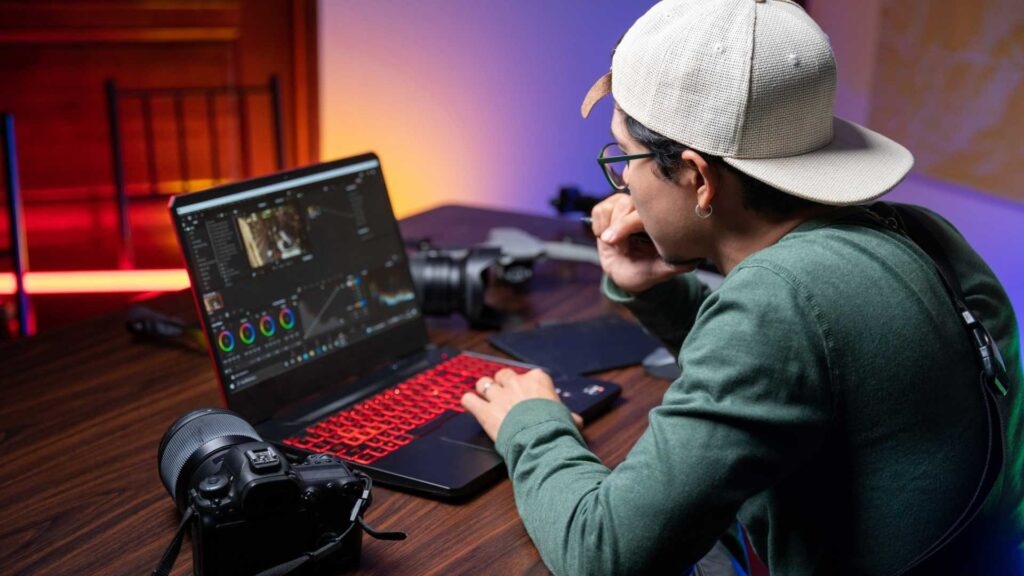
Why Cloud Retouch is the Best Choice
With so many image editing options available, why choose Cloud Retouch? Our Shadow Creation Service stands out because we combine technical precision with artistic insight. We don’t just add shadows -we craft them to enhance the product, align with your brand, and drive conversions. Every image is handled with care, ensuring consistent quality across your entire catalog.
Our team understands that every product is unique, and we tailor our approach accordingly. We work closely with clients to understand their vision, providing realistic shadows that complement the product’s shape, lighting, and context. The result is professional, eye-catching images that not only look great but also help businesses sell more.
Boost Your Sales Today
In today’s competitive online marketplace, professional presentation can make all the difference. By leveraging Cloud Retouch’s Shadow Creation Service, businesses can transform ordinary product images into visually compelling assets that drive engagement and increase conversions. Shadows are more than just an aesthetic touch -they are powerful tools that influence perception, build trust, and enhance the overall shopping experience.
Whether you are a small business looking to improve your catalog, a photographer seeking professional edits, or a marketing team aiming to optimize visuals for campaigns, Cloud Retouch’s Shadow Creation Service delivers results. Every image is treated with care, ensuring that your products look polished, professional, and irresistible to customers.
To experience the full potential of professional shadow creation, visit Cloud Retouch and see how our Shadow Creation Service can elevate your product images and boost sales instantly. Don’t settle for flat, uninspiring visuals -let your products shine and drive conversions with Cloud Retouch.
Top 10 Best Image Editing Service Companies
In today’s world, images speak louder than words. Whether you’re a professional photographer, a business owner looking to enhance product photos, or just someone wanting to improve personal pictures, having access to top-notch image editing services is key. From minor touch-ups to complex image manipulations, professional editing can make a significant difference in how an image is perceived. With so many companies offering image editing services, it can be overwhelming to choose the right one. In this article, we will dive into the top 10 best image editing service companies that stand out for their quality, reliability, and customer satisfaction.

Understanding Image Editing Services
Before exploring the best image editing service companies, it’s important to understand the various services they offer. Image editing can include everything from simple color corrections to advanced services like background removal, portrait retouching, and even complex photo manipulations. These services are used by professionals in various fields such as photography, e-commerce, marketing, and even for personal projects. The right editing service can turn an average photo into a stunning visual.
The demand for image editing has surged, especially in the business world. Companies need to present their products in the best possible light for marketing, and individuals often need personal photos polished before sharing them on social media. Finding the right company can make a world of difference, so let’s take a look at the best image editing service companies that can help you take your images to the next level.
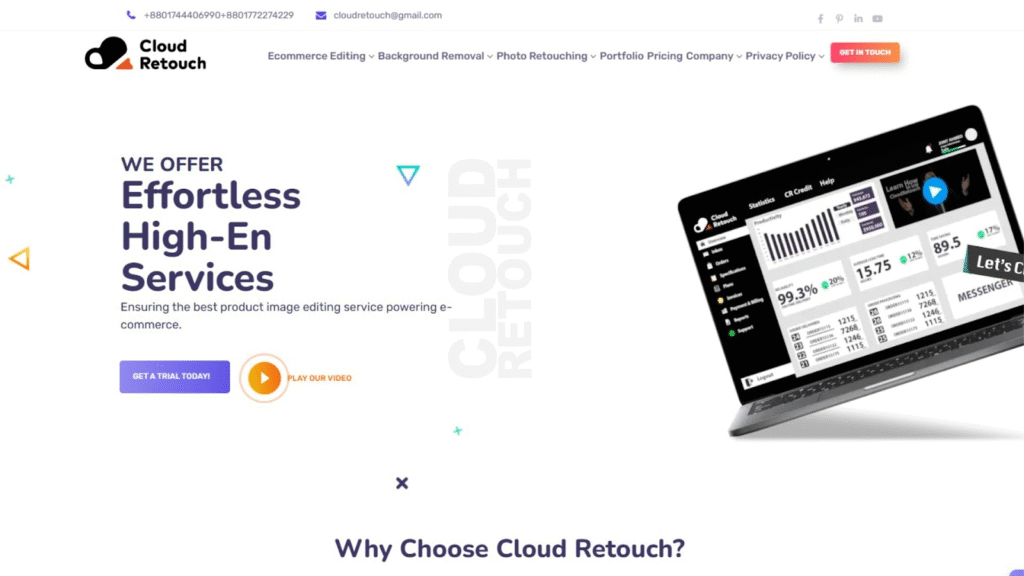
1. Cloud Retouch
Cloud Retouch is widely regarded as one of the best image editing service companies in the industry. Specializing in professional photo retouching, this company offers a wide variety of services ranging from basic photo enhancement to advanced manipulation. Their team of skilled professionals can handle everything from skin smoothing to background replacement, ensuring your photos look polished and refined.
What sets Cloud Retouch apart is their dedication to customer satisfaction. They offer tailored solutions based on the unique needs of each client, making them a versatile choice for individuals and businesses alike. Whether you need high-end retouching for fashion photography or require subtle product photo enhancements, Cloud Retouch delivers excellent results every time.

2. Image Work India
Image Work India is a powerhouse among the best image editing service companies, particularly in the field of clipping path and background removal services. This company is a top choice for e-commerce businesses that need their product images to be flawless. Image Work India’s team excels at removing distracting backgrounds and creating clear, clean images that make products stand out.
Additionally, Image Work India is known for its fast turnaround times and affordable pricing. Whether you are working on a small batch of images or need to edit hundreds of product photos, their team can deliver high-quality results in record time. Their experience and expertise make them an excellent option for businesses that need reliable and efficient image editing.
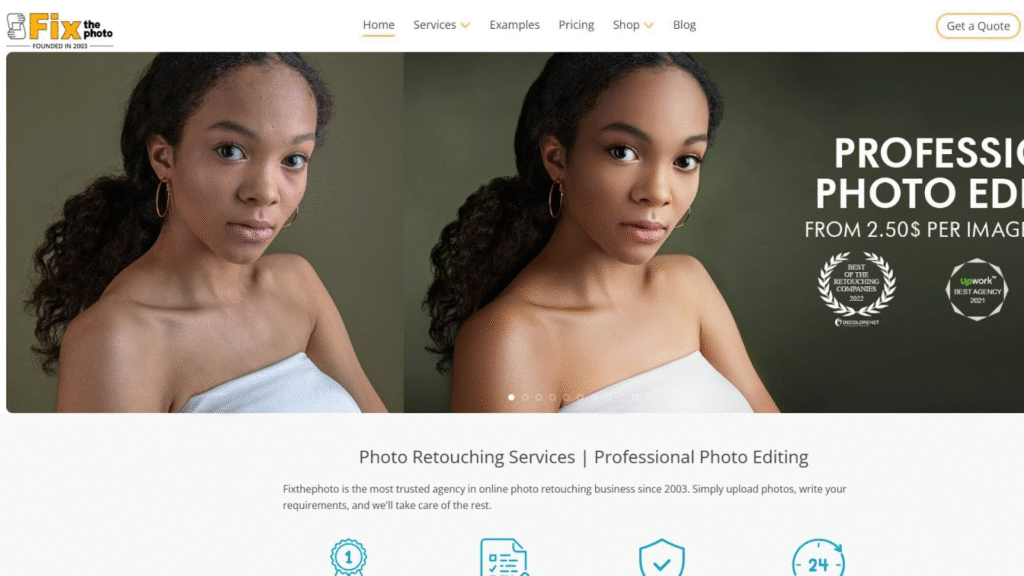
3. FixThePhoto
FixThePhoto is another leading name among the best image editing service companies. This company is highly recommended for portrait retouching, wedding photography edits, and high-end photo restoration. Whether you need to remove blemishes, enhance colors, or smooth out skin, FixThePhoto’s team of professionals is equipped to handle even the most detailed editing tasks.
They are particularly popular among photographers who want to outsource their photo editing work. With years of experience and a keen eye for detail, FixThePhoto delivers outstanding results that maintain the natural look of the original image while enhancing its overall quality. The company’s dedication to quality and customer satisfaction places them at the top of the list of best image editing service companies.

4. Pixelz
For e-commerce businesses and fashion photographers, Pixelz is one of the best image editing service companies. Specializing in high-volume image editing, Pixelz helps businesses improve their product images with background removal, color corrections, and retouching services. Their expert team is adept at optimizing images for online stores, making sure they look professional and ready for marketing.
What makes Pixelz stand out is their ability to handle large quantities of images without compromising on quality. Whether you need hundreds of product photos edited for an online catalog or just a few for a specific campaign, Pixelz delivers exceptional results at scale. This efficiency and consistency have earned them a top spot among the best image editing service companies.

5. Color Experts International
Color Experts International is a well-established name among the best image editing service companies, particularly for businesses that need reliable and high-quality photo editing for product images. This company excels at background removal, color correction, and retouching, which are essential for creating sharp and vibrant product photos for websites, social media, and marketing campaigns.
What sets Color Experts International apart is their commitment to excellence and customer service. They provide personalized editing services to meet the unique needs of each client and ensure that every image looks its absolute best. Their team is highly skilled and equipped to handle even the most challenging editing tasks, making them a go-to option for businesses and photographers alike.
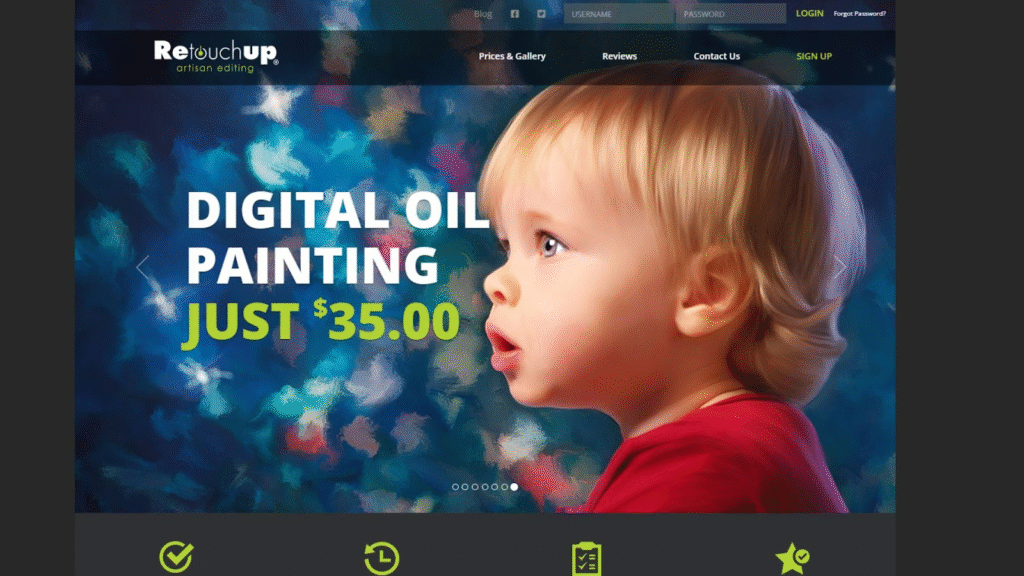
6. RetouchUp
RetouchUp is one of the best image editing service companies for photographers and businesses looking to enhance the quality of their images. Known for offering top-tier portrait retouching, real estate photo editing, and product photo enhancement, RetouchUp has a reputation for delivering high-quality results quickly.
This company stands out because of its client-oriented approach. They offer flexible services and revisions to ensure that clients are satisfied with the final product. Whether you need professional retouching for portraits or high-quality edits for e-commerce, RetouchUp’s experienced team is dedicated to helping you achieve the best possible results. Their attention to detail and commitment to excellence make them a favorite among the best image editing service companies.

7. Offshore Clipping Path
When it comes to precision and efficiency, Offshore Clipping Path is one of the best image editing service companies. This company specializes in clipping path and background removal services, which are essential for creating clean and professional-looking images. Offshore Clipping Path’s team works diligently to ensure that each image is edited to perfection, with the highest level of detail and accuracy.
Their services are widely used by photographers, designers, and e-commerce businesses who need quick and reliable image editing. With a focus on delivering high-quality results in a timely manner, Offshore Clipping Path has become a trusted name in the industry. Whether you need to edit a single image or a large batch, they can provide affordable and fast solutions.
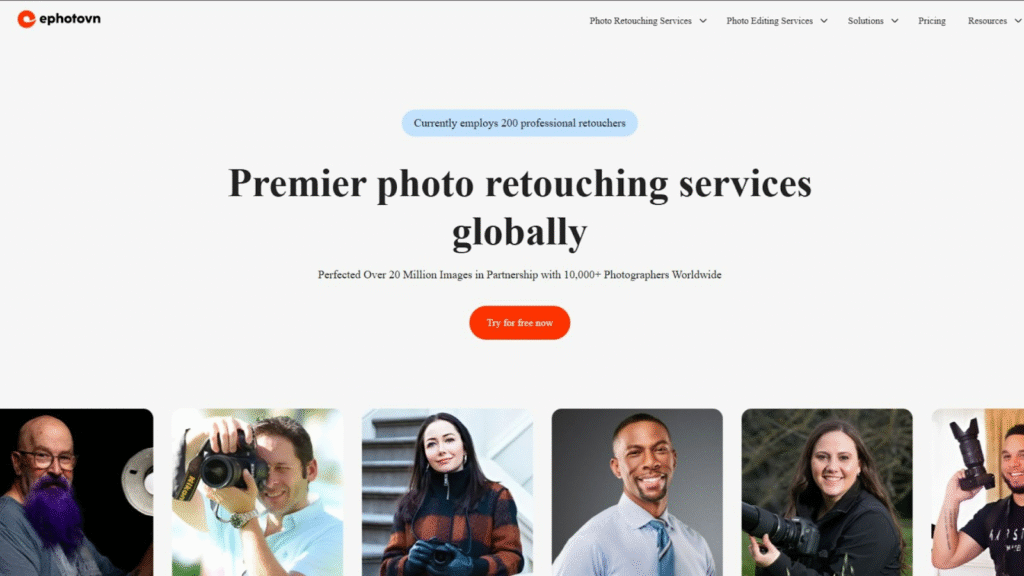
8. ephotovn
ephotovn is one of the best image editing service companies for those seeking comprehensive editing solutions, including portrait retouching, product photo enhancement, and background removal. Their team is highly skilled in both basic and advanced editing techniques, making them a great option for businesses and photographers who need professional-quality images.
ephotovn’s expertise is particularly valuable for businesses in the fashion and e-commerce sectors. They understand the importance of presenting a product in its best light and offer services that help improve the overall look of product images. Their commitment to providing high-quality services with fast turnaround times has earned them a strong reputation in the image editing industry.

9. Image Retouching India
Image Retouching India is another standout among the best image editing service companies. This company specializes in retouching, restoration, and enhancement services for a wide range of image types. From wedding photos to product photography, Image Retouching India offers the expertise needed to bring out the best in any image.
Their team of expert editors is skilled at subtle retouching, making sure that images retain their natural look while enhancing their overall quality. Whether you’re a professional photographer, a business owner, or someone looking to enhance your personal photos, Image Retouching India provides high-quality editing services tailored to your needs.
Why Choose the Best Image Editing Service Companies?
The best image editing service companies offer several advantages, including expert editing skills, fast turnaround times, and customized services to meet your specific needs. Professional image editing can transform an ordinary photo into something extraordinary, helping businesses present their products in the best possible light and photographers create stunning images.
By choosing one of the best image editing service companies, you ensure that your images are edited with precision and attention to detail. These companies offer a range of services that cater to different needs, whether it’s simple touch-ups or complex photo manipulations. Their expertise and experience make them valuable partners for anyone looking to enhance their visual content.
Conclusion
Choosing the right company for your image editing needs is essential to achieving high-quality results. From Cloud Retouch’s expert retouching to Image Work India’s reliable background removal, the best image editing service companies can help you create stunning visuals that meet your personal or business goals. Whether you’re a photographer, a business owner, or someone looking to enhance personal images, these companies provide the tools and expertise you need to elevate your photos. With fast, professional, and affordable services, these companies are your go-to partners for all things image editing.
FAQs About the Best Image Editing Service Companies
1. What are image editing services?
Image editing services enhance or modify digital images to improve their appearance. These services can include tasks like color correction, background removal, retouching, and photo manipulation.
2. Why should I use professional image editing services?
Professional image editors can deliver high-quality results that enhance the visual appeal of your photos. This is essential for businesses, photographers, and anyone wanting polished, professional images without investing the time and effort required for DIY editing.
3. What types of image editing services are available?
Common services include clipping path, background removal, retouching, color correction, photo restoration, and photo manipulation, which are used to enhance product images, portraits, or any other visual content.
4. How do I choose the best image editing service company?
Look for companies with high-quality work, fast turnaround times, reasonable pricing, good customer support, and specialization in the services you need (like portrait retouching, product image editing, etc.).
5. How long does it take to get my images edited?
Editing time depends on the complexity and volume of images. Simple edits may take a few hours, while more complex tasks or larger batches may take several days. It’s best to clarify turnaround time with the company before starting.
6. How much do image editing services cost?
Costs vary depending on the type and complexity of the editing. Basic tasks like background removal are usually cheaper, while advanced services like photo manipulation can be more expensive. Many companies offer bulk discounts.
7. Can I request revisions if I’m not satisfied with the result?
Yes, most companies offer revisions if you’re not satisfied with the initial edits. Be sure to confirm the company’s revision policy before placing your order.
8. Are these image editing companies secure to use for my business or personal projects?
Reputable companies ensure the security of your images and data. It’s a good idea to check their privacy policy and data protection practices before submitting your photos.
9. Do image editing service companies provide services for all types of images?
Yes, most companies edit all types of images, including product photos, portraits, wedding images, real estate photos, and more.
10. How do I submit my images for editing?
You can typically upload your images via the company’s website or send them via email. Some companies also offer platforms for batch uploads and project management.
11. Can image editing services improve my SEO or marketing efforts?
Yes, high-quality edited images improve user experience, enhance your marketing materials, and boost engagement on websites and social media, indirectly supporting SEO efforts.
12. What makes these companies stand out as the best image editing service companies?
These companies are known for their expertise, quality work, fast delivery, excellent customer support, and tailored services to meet specific client needs.
10-Minute Ultra-Fast Retouching Turnaround: Scaling Efficiency in Image Editing
In the fast-paced world of digital content creation, efficiency is the key to success. Whether you are a professional photographer, graphic designer, or content creator, the ability to deliver high-quality images quickly is crucial. In this article, we explore the concept of a 10-minute ultra-fast retouching turnaround and how it can revolutionize the way we approach image editing, allowing for scalability and increased productivity.
The Need for Speed in Image Editing
In an era where visual content dominates online platforms, the demand for captivating images is higher than ever. Photographers and designers often find themselves under pressure to deliver polished, eye-catching visuals in record time. Traditional retouching processes can be time-consuming, leading to missed deadlines and potential opportunities.
Recognizing the need for speed, industry professionals are turning to innovative solutions to streamline their workflow. The 10-minute ultra-fast retouching turnaround has emerged as a game-changer, allowing for efficient editing without compromising on quality.
Leveraging Technology for Speed and Precision
The advent of advanced image editing software and artificial intelligence has paved the way for unprecedented speed and precision in retouching. Automation tools, smart algorithms, and machine learning have significantly reduced the time required for tasks that were once painstakingly manual.
One notable example is the use of AI-powered retouching tools that can automatically enhance skin tones, remove blemishes, and adjust lighting in a matter of minutes. These tools analyze the image, identify imperfections, and apply corrections with remarkable accuracy. By harnessing the power of technology, professionals can achieve flawless results in a fraction of the time it would traditionally take.
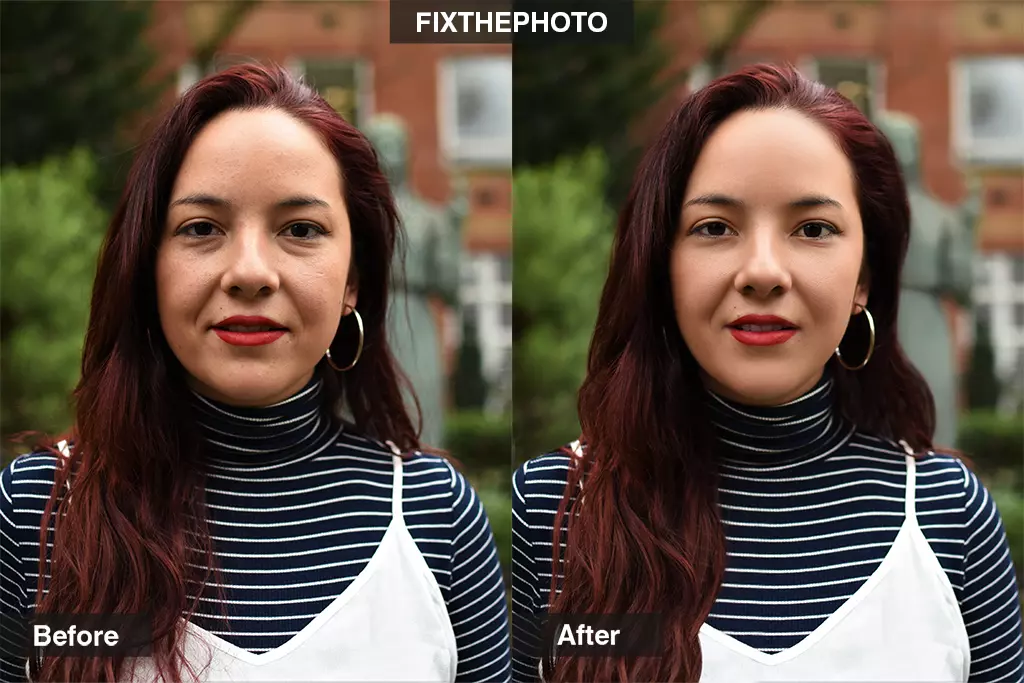
The Importance of Scalability
Efficiency in image editing is not only about speed but also about scalability. As the demand for high-quality visuals continues to rise, professionals need to be able to scale their operations without compromising on the quality of their work. The 10-minute ultra-fast retouching turnaround is not just a time-saving technique; it is a scalable solution that allows for the rapid processing of large volumes of images.
Imagine a scenario where a photographer needs to edit hundreds of images from a recent photoshoot for a client’s advertising campaign. With traditional retouching methods, this could take days, if not weeks. However, by implementing a streamlined process that leverages technology and automation, the same task can be completed in a matter of hours, if not minutes. This level of scalability is invaluable in today’s fast-paced digital landscape.
Enhancing Creativity Through Efficiency
Contrary to the misconception that speed compromises creativity, the 10-minute ultra-fast retouching turnaround can enhance the creative process. By eliminating the tedious and time-consuming aspects of manual retouching, professionals can allocate more time to the artistic and conceptual aspects of their work.
With the burden of repetitive tasks lifted, photographers and designers can focus on experimenting with different creative approaches, exploring unique styles, and pushing the boundaries of their artistic expression. The newfound efficiency not only accelerates the delivery of projects but also opens up space for innovation and creative exploration.

Overcoming Challenges with a Systematic Approach
Implementing a 10-minute ultra-fast retouching turnaround requires a systematic approach that combines technology, expertise, and a well-defined workflow. Here are some key steps to achieve efficient and scalable image editing:
Selecting the Right Tools:
Invest in advanced image editing software and AI-powered retouching tools that align with your specific needs. Choose tools that offer a balance between automation and manual control to ensure flexibility and precision.
Customizing Workflows:
Develop customized workflows that cater to your unique requirements. Identify repetitive tasks that can be automated and create a systematic process for handling different types of edits. This ensures consistency and accelerates the overall editing process.
Training and Skill Development:
Provide training to your team to familiarize them with the selected tools and workflows. Developing expertise in utilizing technology for retouching is crucial for maximizing efficiency. Continuous skill development ensures that your team stays ahead of industry trends and advancements.
Quality Assurance:
Despite the speed, quality should never be compromised. Implement robust quality assurance measures to ensure that the edited images meet the highest standards. This may involve manual reviews, feedback loops, and fine-tuning automated processes to align with specific project requirements.
Scalability Planning:
Anticipate future scalability needs and plan accordingly. Ensure that your systems can handle increased workloads without sacrificing efficiency or quality. Scalability planning involves both technological infrastructure and human resources.
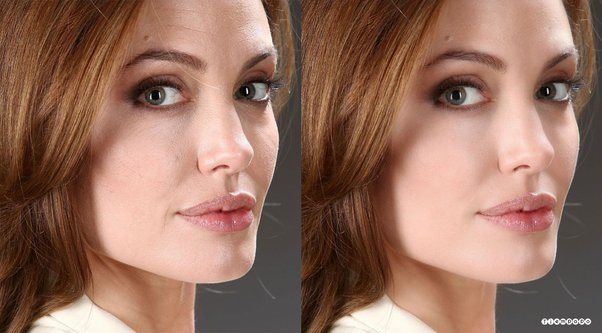
The Future of Image Editing
The 10-minute ultra-fast retouching turnaround represents a paradigm shift in the way we approach image editing. As technology continues to evolve, we can expect even more advanced tools and techniques that further enhance speed, precision, and scalability.
The integration of artificial intelligence, machine learning, and automation into image editing processes is likely to become more sophisticated, allowing for a seamless blend of human creativity and technological efficiency. The future holds exciting possibilities for professionals in the visual content creation industry, where the rapid turnaround of high-quality images becomes the new standard.
Conclusion
The 10-minute ultra-fast retouching turnaround is not just a time-saving strategy; it is a strategic approach to scaling efficiency in image editing. By leveraging technology, streamlining workflows, and fostering a creative environment, professionals can meet the growing demand for captivating visuals while pushing the boundaries of their artistic expression. Embracing this transformative approach is not just about keeping up with the pace of the industry; it’s about leading the way into a future where efficiency and creativity go hand in hand.
Lighting Setups for Apparel: Making Your Photos Shine
In the world of e-commerce and visual storytelling, high-quality product photography is essential, especially when it comes to showcasing apparel. The right lighting can make all the difference, elevating your images and capturing the essence of your clothing line. In this guide, we’ll explore three versatile lighting setups tailored to enhance the appeal of your apparel, making your photos truly shine.
1. Natural Light Elegance
Natural light provides a soft, flattering illumination that can beautifully showcase the texture and details of your apparel. This setup is ideal for capturing the natural colors and textures of fabrics, creating a fresh and authentic feel.
Setup:
Choose a location with ample natural light, such as a room with large windows or a well-lit outdoor space.
Position your model or mannequin near the light source, ensuring that the natural light falls evenly on the apparel.
Use a reflector on the opposite side to bounce light back onto the shadows, providing a balanced and soft overall look.
Benefits:
Soft and flattering illumination.
Authentic representation of colors and textures.
Minimal equipment required.
Tips:
Schedule your shoots during the golden hours (early morning or late afternoon) for warm, directional light.
Experiment with diffusers to soften harsh sunlight and avoid overexposure.
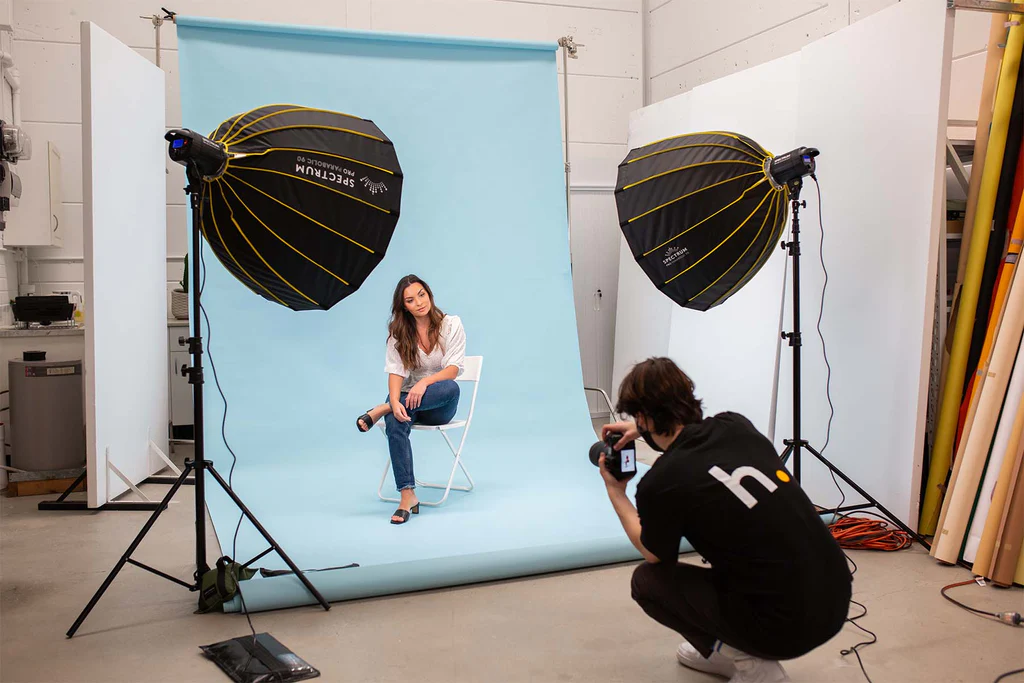
2. Studio Precision with Softboxes
For a more controlled and polished look, a studio setup with softboxes is an excellent choice. This lighting arrangement allows for precise control over highlights and shadows, emphasizing the details and contours of your apparel.
Setup:
Position one or two softboxes on either side of the apparel, slightly behind the camera, at a 45-degree angle to the subject.
Adjust the distance and angle of the softboxes to control the intensity and direction of the light.
Use a third light source, such as a fill light or reflector, to minimize harsh shadows and ensure even lighting.
Benefits:
Controlled and directional lighting.
Highlighting details and textures with precision.
Consistent results for a professional look.
Tips:
Experiment with different softbox sizes and positions to achieve the desired level of diffusion.
Use a white background or a seamless backdrop for a clean and focused presentation.
3. Dramatic Shadows for Depth
If you want to add a touch of drama and depth to your apparel photography, playing with shadows can create visually striking images. This setup is particularly effective for highlighting the silhouette and contours of your clothing.
Setup:
Position a single strong light source, such as a spotlight or directional lamp, to cast shadows on one side of the apparel.
Place the light at a 45-degree angle to the subject to create dynamic shadows.
Experiment with the distance and intensity of the light to control the level of drama in your images.
Benefits:
Emphasizes depth and silhouette.
Creates a sense of mood and atmosphere.
Draws attention to specific features of the apparel.
Tips:
Combine this setup with a neutral background to enhance the impact of the shadows.
Play with the positioning of the light source to achieve different shadow effects.
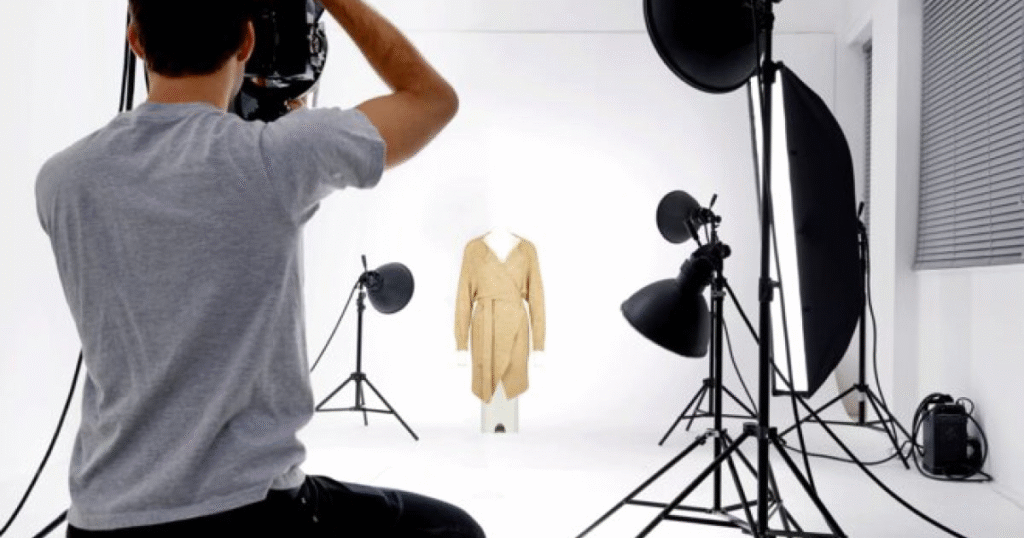
General Tips for Apparel Photography Lighting:
Consistency is Key:
Ensure that the lighting is consistent across all your apparel photos to maintain a cohesive look for your brand.
Use a Tripod:
Stabilize your camera with a tripod to maintain sharp focus and composition, especially in studio setups.
Mind the Angles:
Experiment with different angles to find the most flattering and effective way to showcase your apparel, considering the design and details.
Post-Processing Touch-ups:
Fine-tune your images in post-processing to adjust exposure, color balance, and contrast for a polished final result.
By tailoring your lighting setups to the unique characteristics of your apparel and brand aesthetic, you can create a visually compelling portfolio that not only showcases your products but also tells a story. Experiment with these lighting techniques, and watch as your apparel photos shine, capturing the attention of your audience and elevating your brand presence.
7 Easy Steps to Create Professional Apparel Product Photos with Live Models
Capturing professional product photos with live models adds a dynamic and relatable touch to your apparel marketing. Whether you’re running an e-commerce store or promoting your clothing line on social media, showcasing your products on models can significantly enhance their appeal. In this guide, we’ll walk you through seven easy steps to create stunning and professional apparel product photos with live models.
1. Define Your Style and Concept
Before the photoshoot, establish a clear vision for your brand’s aesthetic. Determine the style, mood, and concept that align with your apparel line. Are you aiming for a casual, lifestyle look or a more polished and high-fashion vibe? This initial step sets the tone for the entire shoot.
2. Select the Right Models
Choose models that embody the style and target audience of your brand. Consider factors such as age, body type, and personality to ensure a relatable and authentic representation of your apparel. Diversity in your model selection can also broaden your brand’s appeal and inclusivity.
3. Prepare Wardrobe and Accessories
Plan the outfits and accessories the models will wear during the shoot. Ensure that the clothing is clean, well-ironed, and free of any defects. Pay attention to styling details, such as pairing accessories and coordinating colors, to enhance the overall look and feel.

4. Create a Well-Lit Environment
Lighting is crucial for professional-looking photos. Set up your shoot in a well-lit space with ample natural light or invest in studio lighting equipment. Soft, diffused lighting works well for apparel photography, minimizing harsh shadows and highlighting the details of the clothing.
5. Establish a Collaborative Atmosphere
Foster a collaborative and positive atmosphere during the shoot. Communicate openly with the models, allowing them to bring their personalities into the photos. Encourage them to experiment with poses that showcase the apparel while maintaining a natural and approachable demeanor.
6. Experiment with Poses and Angles
Encourage variety in poses and angles to capture the versatility of your apparel. Experiment with close-up shots to highlight details and wide-angle shots to showcase entire outfits. Capture both front and back views to give customers a comprehensive look at the products.

7. Post-Processing and Editing
After the shoot, perform post-processing to enhance the final images. Adjust exposure, color balance, and contrast to achieve a polished and cohesive look. Be mindful of retouching – aim for a natural appearance to maintain authenticity.
Bonus Tips:
Focus on Details:
Capture close-ups of fabric textures, patterns, and stitching details to give customers a clear view of the quality of your apparel.
Tell a Story:
Develop a narrative around your products by incorporating lifestyle elements into the photos. Showcase how your apparel fits into the everyday lives of your customers.
Consider the Background:
Choose a background that complements your brand and doesn’t distract from the apparel. A clean and neutral backdrop is often a safe and versatile choice.

Use Props Sparingly:
If applicable, incorporate props that enhance the storytelling aspect without overshadowing the main focus – your apparel.
Feedback and Iteration:
Review the images with your team and gather feedback. Use this input for continuous improvement, refining your approach for future photoshoots.
By following these seven steps and incorporating the bonus tips, you’ll be well on your way to creating professional and engaging apparel product photos with live models. Remember, authenticity and attention to detail are key to building a visual narrative that resonates with your audience and elevates your brand image.
7 Steps to Optimize Your Product Images and Boost Visibility on Google Shopping
In the highly competitive landscape of e-commerce, optimizing your product images is crucial for standing out and attracting potential customers. Google Shopping, with its visually oriented platform, places a premium on high-quality images. Here are seven steps to help you optimize your product images and improve your visibility on Google Shopping.
1. High-Quality Images are Non-Negotiable
Ensure that your product images are of the highest quality possible. High-resolution images not only enhance the user experience but also demonstrate professionalism. Google recommends images with a minimum resolution of 100 x 100 pixels and a zoom function to allow users to inspect products more closely.
2. Follow Google’s Image Guidelines
Adhere to Google’s specific image guidelines for product listings. This includes using clear, uncluttered images with a plain white background, focusing on the product itself. Images should not include watermarks, promotional text, or logos. Complying with these guidelines ensures that your product listings meet Google’s standards.
3. Optimize Image File Names
Assign descriptive and keyword-rich file names to your product images. Instead of generic names like “IMG001,” use names that reflect the product, such as “blue-running-shoes.jpg.” This not only helps search engines understand the content but also contributes to better visibility in relevant searches.
4. Leverage Alt Text for Accessibility
Alt text is crucial for accessibility and also plays a role in search engine optimization. Describe your product using concise and relevant alt text. Think about the terms users might use to search for your product, and incorporate those keywords naturally into the alt text. This step not only aids visually impaired users but also improves your product’s discoverability.
5. Implement Structured Data Markup (Schema Markup)
Structured data markup, or schema markup, provides search engines with additional information about your product. Utilize schema markup to highlight essential details such as product name, price, and availability. This helps search engines understand the context of your product listings, increasing the likelihood of appearing in relevant search results.

6. Mobile Optimization is Key
Given the rise in mobile shopping, ensure that your product images are optimized for mobile devices. Google Shopping reaches users across various devices, so your images must be visually appealing and load quickly on smartphones and tablets. Test your images on different devices to guarantee a seamless experience for all users.
7. Regularly Update and Refresh Images
Keep your product images current and reflective of the current inventory. Regularly update your Google Merchant Center with fresh images to showcase your latest products accurately. This practice not only keeps your listings relevant but also signals to search engines that your content is up-to-date.
Bonus Tips:
A/B Test Your Images:
Experiment with different image styles, angles, or backgrounds to determine which ones resonate best with your audience. A/B testing can provide valuable insights into the preferences of your target customers.

Monitor Analytics and Performance:
Use Google Analytics and Google Merchant Center insights to track the performance of your product images. Analyzing data such as click-through rates and conversion rates can help you refine your image optimization strategy.
Consistency Across Channels:
Maintain a consistent visual identity across various platforms. This not only reinforces brand recognition but also ensures a cohesive shopping experience for your customers.
By following these seven steps and incorporating the bonus tips, you’ll be well on your way to optimizing your product images for Google Shopping. Remember, the goal is not just to meet technical requirements but to create visually compelling listings that resonate with your target audience and drive engagement and conversions.
Academy Quality: Achieving Consistency and Rapid Onboarding with Cloudretouch
In the ever-evolving landscape of digital content creation, maintaining high-quality visuals is paramount. Whether you are a professional photographer, e-commerce entrepreneur, or part of a creative team, achieving consistency in image quality and ensuring a swift onboarding process for new team members are essential factors. Cloudretouch emerges as a solution that not only upholds academy-level standards but also streamlines the onboarding journey, making it a valuable asset in the world of visual content production.
Consistency in Image Quality
1. Professional Retouching Services:
Cloudretouch offers professional retouching services that adhere to the standards expected in the academy. From skin retouching to color correction, their team of skilled retouchers ensures that each image meets the desired quality benchmarks.
2. Customizable Style Guidelines:
Maintaining a consistent visual style across your content is crucial for brand identity. With Cloudretouch, you can establish and customize style guidelines, ensuring that every image aligns with your brand aesthetics. This level of customization allows for a cohesive and polished look in your visual content.
3. Quality Control Mechanisms:
Cloudretouch incorporates robust quality control mechanisms to guarantee that each retouched image meets the specified criteria. This commitment to quality ensures that your visuals maintain a professional standard, whether they are product photos, portraits, or marketing materials.
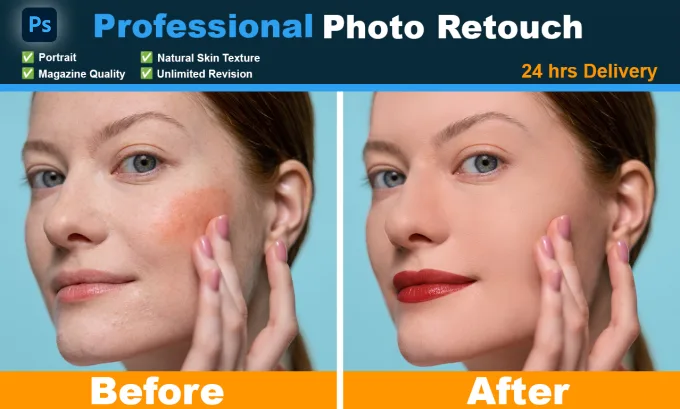
Fast Onboarding for New Team Members
1. Intuitive Platform Design:
Cloudretouch boasts an intuitive platform design, facilitating a seamless onboarding process for new team members. The user-friendly interface allows individuals to quickly familiarize themselves with the platform, reducing the learning curve associated with complex retouching tools.
2. Comprehensive Training Resources:
To expedite the onboarding process, Cloudretouch provides comprehensive training resources. These may include tutorials, guides, and interactive sessions, enabling new team members to grasp the intricacies of the platform efficiently. The availability of such resources ensures that the transition to using Cloudretouch is both smooth and swift.
3. Collaborative Workflows:
Cloudretouch fosters collaborative workflows, allowing team members to work on projects simultaneously. This collaborative aspect streamlines the onboarding process as new team members can learn from and collaborate with experienced users. Real-time feedback and collaboration contribute to a faster learning curve.
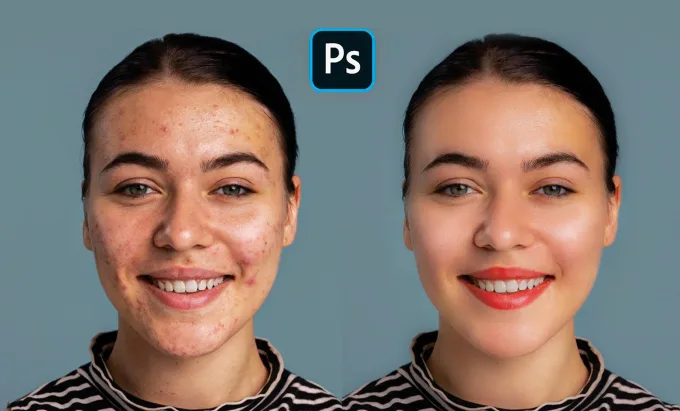
The Cloudretouch Advantage
1. Scalability:
Whether you are a small business or a large enterprise, Cloudretouch offers scalability. The platform can accommodate varying workloads, making it suitable for businesses with fluctuating retouching needs. This scalability ensures that you can adapt to the demands of your projects without compromising on turnaround times.
2. Time-Efficient Processes:
Cloudretouch optimizes retouching processes, significantly reducing the time required to enhance and edit images. The platform’s efficiency contributes to faster project completion, enabling your team to meet deadlines without sacrificing the quality of the final output.
3. Cost-Effective Solution:
By streamlining the retouching workflow, Cloudretouch provides a cost-effective solution. The reduction in manual labor and the elimination of time-consuming processes contribute to cost savings, making it a viable option for businesses looking to optimize their budget while maintaining high-quality visuals.

Conclusion
In the dynamic realm of visual content creation, Cloudretouch stands out as a tool that combines academy-quality retouching with the advantages of consistency and rapid onboarding. Whether you are striving to maintain a professional visual standard across your brand or seeking to efficiently integrate new team members into your creative processes, Cloudretouch offers a comprehensive solution. Embrace the power of Cloudretouch to elevate your visual content and streamline your creative workflows.






